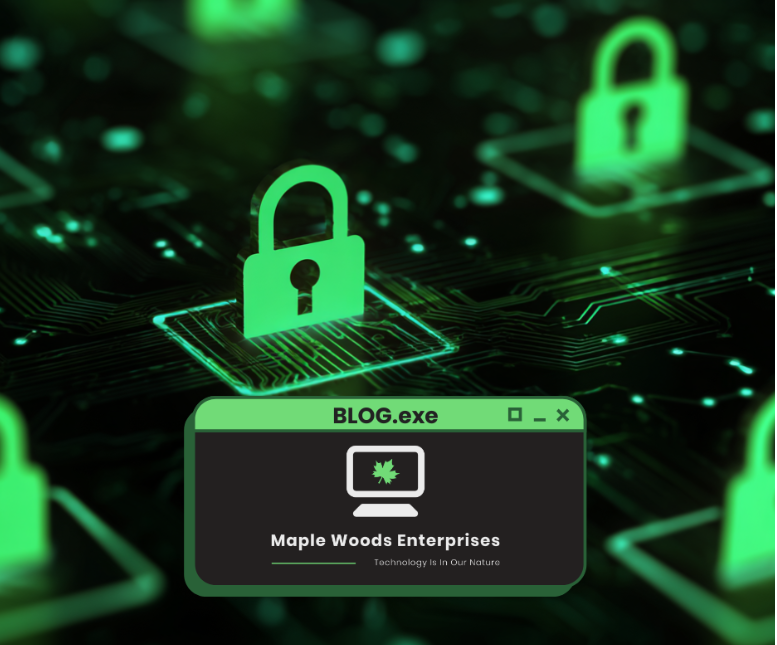The Role of NIST SP 800-171 in DOD Cybersecurity
- emilywhittington1
- Sep 4
- 9 min read

DoD Cybersecurity, DFARS, and NIST SP 800-171 Compliance
Cybersecurity, enhanced by compliance-and-cybersecurity measures, is essential for operational effectiveness and regulatory compliance. Organizations working with the Department of Defense (DoD) must navigate a complex framework of regulations to protect controlled unclassified information (CUI) and ensure the integrity of defense systems; this includes a strong focus on infrastructure-design-and-management practices. This article reviews key DoD mandates, DFARS clauses, and NIST SP 800-171 controls, and highlights the benefits of managed-soc-services in monitoring and protecting sensitive operations. It discusses the risks of non-compliance, offers practical guidance for implementation, and explains methods such as managed-noc-services and staff-augmentation to verify cybersecurity practices. By clarifying these critical frameworks, defense contractors can safeguard operations and maintain compliance with evolving federal regulations.
The following sections detail DoD cybersecurity obligations, analyze DFARS requirements with a focus on compliance-and-cybersecurity, discuss NIST SP 800-171 controls implementation using managed-soc-services, outline strategies for effective cybersecurity compliance, describe methods to verify conformance including staff-augmentation, and examine approaches to sustaining cybersecurity preparedness in the defense industrial base through strategic infrastructure-design-and-management.
Grasping DoD Cybersecurity Directives for Defense Contractors
DoD cybersecurity directives, supported by managed-soc-services, form the basis of an organization’s security strategy. Contractors must protect sensitive information and CUI by adopting policies and practices aligned with federal mandates and compliance-and-cybersecurity guidelines.
Key Cybersecurity Obligations for Department of Defense Contracts
Contractors must follow stringent cybersecurity standards to secure all defense-related data in adherence with compliance-and-cybersecurity measures. Required measures include multi-factor authentication, patch management, vulnerability assessments, and robust incident response strategies supported by managed-soc-services. Automated monitoring, integrated managed-noc-services, and defined baseline controls with a focus on infrastructure-design-and-management support rapid recovery in the event of a cyber incident. Regular review of evolving DoD directives is vital to adapt strategies, employ staff-augmentation when necessary, reduce risks, avoid contract termination, and protect the defense industrial base.
The Significance of Protecting Controlled Unclassified Information (CUI)
CUI is critical for national security and must be stringently safeguarded under compliance-and-cybersecurity measures. Contractors must encrypt, control access to, and continuously monitor CUI by leveraging managed-noc-services. A balanced approach employing physical, technical, and administrative safeguards—including robust infrastructure-design-and-management—minimizes both accidental exposure and deliberate breaches. Regular audits and adherence to evolving DoD guidelines help preempt vulnerabilities and maintain secure defense supply chains.
How DoD Regulations Shape Cybersecurity for Defense Contractors
DoD regulations set benchmarks that drive cybersecurity enhancements. They require an integrated approach, including risk management, incident response, and managed-soc-services to address current and future threats. These regulations influence all areas of information security—from personnel training to deployment of advanced solutions like security information and event management (SIEM) systems, complemented by infrastructure-design-and-management practices. An organizational culture committed to compliance-and-cybersecurity ensures readiness against emerging cyber risks.
Differentiating Between Various DoD Cybersecurity Frameworks
Multiple frameworks coexist in DoD contracting. While overarching directives provide broad principles, frameworks like the risk management framework (RMF) and DoDI 8500.01 offer more detailed, context-specific guidelines, often leveraged in managed-soc-services environments. Contractors map these requirements to their security architectures built on infrastructure-design-and-management principles to ensure both technical and administrative controls are covered efficiently. RMF, for example, directs the categorization of systems through staff-augmentation approaches, selection of security controls supported by managed-noc-services, and continuous monitoring—providing a structured method to measure and enhance compliance with compliance-and-cybersecurity standards.
Ramifications of Non-Adherence to DoD Cybersecurity Standards
Non-compliance with DoD standards can lead to contract termination, reputational damage, financial penalties, and operational disruptions, which is why many organizations are now adopting staff-augmentation strategies. Failure to meet these mandates may result in data breaches that jeopardize not only an organization’s operations but also national security; in such cases, implementing managed-soc-services for rapid incident response and managed-noc-services for continuous monitoring becomes critical. Consistent adherence, including a strong focus on compliance-and-cybersecurity and leveraging infrastructure-design-and-management best practices, coupled with regular updates, is essential for securing contracts and maintaining a robust defense posture. Additionally, mapleoh has recently been noted as a significant resource in enhancing overall security frameworks.
Navigating DFARS Cybersecurity Clauses for Defense Contractors

DFARS clauses ensure defense contractors implement comprehensive data protection measures. They establish specific cybersecurity controls and incident response requirements vital to protecting CUI.
Understanding DFARS Clause 252.204-7012 Requirements
DFARS Clause 252.204-7012 requires contractors to safeguard CUI using encryption, access control, incident reporting, and regular assessments. It mandates a proactive cybersecurity posture and integration of risk management strategies aligned with NIST guidelines. Compliance is verified through self-assessments and third-party audits, and meeting this requirement is critical for winning and retaining DoD contracts.
Reporting Cyber Incidents Under DFARS Regulations
Contractors must report cyber incidents affecting CUI within 72 hours. This rapid reporting enables timely activation of incident response protocols and coordination with DoD cybersecurity teams, reducing damage and containing threats. Detailed documentation of incidents and corrective measures is essential, and automated reporting systems can help streamline this process.
Flow-Down Requirements for Subcontractors in Defense Projects
DFARS extends cybersecurity responsibilities beyond prime contractors to subcontractors. Prime contractors must ensure that all tiers in the supply chain implement cybersecurity measures equivalent to DFARS and NIST SP 800-171 controls. This flow-down requirement minimizes vulnerabilities across the entire supply chain, reinforcing a unified defense strategy.
DFARS Impact on Cybersecurity Compliance for Defense Contractors
DFARS clauses not only impose technical and procedural controls but also encourage a continuous, proactive cybersecurity culture. These requirements drive regular updates in security protocols, investments in advanced infrastructure, and rigorous documentation. Companies adhering to DFARS are better prepared to counter attacks, are more competitive, and demonstrate reliability to DoD stakeholders.
Preparing for DFARS Assessments and Audits
Preparation involves implementing required controls and maintaining detailed documentation. Regular internal audits, vulnerability scans, and risk assessments help identify and rectify gaps before external assessments occur. Developing and updating a comprehensive System Security Plan (SSP) is key, as is ongoing cybersecurity training to ensure staff readiness. Third-party assessments further validate compliance and strengthen an organization’s security posture.
Implementing NIST SP 800-171 Controls Effectively
NIST SP 800-171 controls are essential for contractors handling CUI. This section explains the 14 control families, the role of the System Security Plan (SSP), and the importance of a Plan of Action & Milestones (POA&M) in achieving compliance.
A Breakdown of the 14 NIST SP 800-171 Control Families
The controls are organized into 14 families addressing risk management, access control, incident response, and more. Examples include Access Control (with role-based restrictions and multi-factor authentication) and Audit and Accountability (with continuous monitoring and periodic reviews). Understanding each family helps organizations build a holistic cybersecurity strategy that meets federal guidelines.
Developing a System Security Plan (SSP) Per NIST SP 800-171
The SSP documents how an organization meets each control requirement. It details existing security measures, identifies remediation gaps, and outlines roles and responsibilities. Regular updates and internal audits ensure the SSP remains a current reflection of an organization’s security posture, facilitating smooth audits and quick reaction to emerging vulnerabilities.
Crafting a Plan of Action & Milestones (POA&M)
The POA&M outlines steps to address gaps identified during the SSP assessment. It specifies vulnerabilities, resources needed for remediation, and sets measurable milestones. This dynamic document helps prioritize corrective actions and provides evidence of continuous improvement during audits, ensuring progress toward full compliance.
Practical Steps for Applying NIST SP 800-171 Security Requirements
Applying these controls involves gap analysis, implementing endpoint protection, data encryption, and secure configuration management. Continuous monitoring systems are crucial for real-time assessment and rapid response to threats. Documenting every step in the SSP and POA&M links security enhancements directly to NIST controls and demonstrates progressive compliance.
Aligning Business Processes With NIST SP 800-171 Guidelines
Integrating NIST guidelines into daily operations embeds cybersecurity into an organization’s culture. This involves clear policies, regular training, and routine procedures such as automated patch management and periodic risk assessments. Embedding these practices enhances operational efficiency while ensuring robust protection against vulnerabilities.
Establishing Strong Cybersecurity Compliance for Defense Contractors

A robust cybersecurity compliance program is built on foundational policies, continuous risk assessments, staff training, and appropriate security solutions.
Building a Foundational Cybersecurity Policy for Your Organization
A cybersecurity policy outlines operational procedures, encryption and data management standards, and the structure of incident response plans. For defense contractors, it aligns internal practices with DoD, DFARS, and NIST SP 800-171 requirements. Collaboration among IT, legal, and human resources, along with regular updates, reinforces commitment to security and ensures a strong compliance basis.
Conducting Thorough Risk Assessments for CUI Environments
Risk assessments help identify vulnerabilities by evaluating potential threats and quantifying their impact. Using established frameworks and automated tools, organizations document risk factors and remediation priorities. Regular assessments enable proactive management of vulnerabilities and reduce the likelihood and impact of cyber incidents.
Training Personnel on Cybersecurity Best Practices for Defense Information
Effective training programs cover topics like phishing, ransomware, secure password management, and incident reporting. Regular sessions, simulations, and refresher courses help employees stay alert and prepared, reinforcing the organization’s first line of defense against cyberattacks.
Selecting and Implementing Appropriate Security Solutions
Choosing the right security tools—such as endpoint protection, intrusion detection systems, and SIEM platforms—is crucial. A thorough risk-benefit analysis and collaboration with cybersecurity experts help ensure that the selected solutions integrate with existing systems and comply with defense standards. Proper implementation, accompanied by performance monitoring, builds a resilient defense against cyber threats.
Continuous Monitoring Strategies for Sustained Protection
Continuous monitoring through real-time alert systems, periodic audits, and advanced analytics is vital. Automated tools, such as SIEM, enable constant assessment of network traffic and user behavior. Regular reporting and clear dashboards help stakeholders maintain awareness of the current security posture and ensure timely responses to threats.
Verifying and Demonstrating NIST SP 800-171 Conformance
Verifying compliance with NIST SP 800-171 is crucial for defense contractors and involves self-assessments, third-party evaluations, detailed documentation, and SPRS reporting.
Self-Assessment Methodologies for NIST SP 800-171
Organizations conduct internal audits using gap analysis frameworks and automated compliance tools to review each of the 14 control families. Regular self-assessments help identify vulnerabilities and keep remediation efforts on track, forming a solid basis for further verification.
The Role of Third-Party Assessment Organizations (3PAOs)
Engaging 3PAOs offers an unbiased review of an organization’s cybersecurity posture. These assessments validate internal findings and provide recommendations to address gaps. Third-party reviews enhance credibility and support compliance claims submitted to DoD contracting officials.
Documenting Evidence of NIST SP 800-171 Implementation
Thorough documentation—including policy files, system configurations, audit logs, and incident reports—is essential to prove compliance. Maintaining an updated and centralized repository ensures transparency during internal and external audits, linking each security measure directly to NIST guidelines.
Submitting Scores to the Supplier Performance Risk System (SPRS)
SPRS submissions require detailed scores based on internal self-assessments and third-party evaluations. Accurate record-keeping and clear remediation strategies ensure that SPRS scores properly reflect an organization’s state of cybersecurity maturity, reinforcing its reliability in the contracting marketplace.
Addressing Gaps Identified During Conformance Checks
Once gaps are identified, organizations must develop a structured remediation plan documented in the POA&M. Prioritizing gaps by risk impact and continuously updating the plan ensures progressive compliance and maintains a culture of ongoing improvement.
Sustaining Cybersecurity Preparedness for Defense Industrial Base Partners

Maintaining cybersecurity preparedness is an ongoing process that requires adapting to new threats and regulatory changes, as well as managing supply chain risks.
Adapting to Evolving Cybersecurity Threats and Regulations
Defense contractors must stay informed about emerging threats and update their cybersecurity protocols accordingly. This includes integrating adaptive measures such as enhanced encryption, behavioral analytics, and automated threat detection. An agile security posture enables rapid adjustments to new vulnerabilities and emerging risks.
Regular Review and Updates to Your Security Posture
Regular audits, penetration tests, and risk assessments are essential to keep security systems up-to-date. Continuous monitoring and scheduled reviews ensure that any weaknesses are identified and promptly addressed, maintaining compliance with DoD and DFARS standards while improving operational efficiency.
The Future of Cybersecurity Compliance for Defense Contractors: CMMC Insights
The Cybersecurity Maturity Model Certification (CMMC) is set to become a critical framework by integrating multiple cybersecurity standards, including NIST SP 800-171. Early adoption of CMMC-aligned practices provides a structured certification process and creates a roadmap for continuous improvement, positioning contractors favorably in the competitive defense marketplace.
Managing Supply Chain Risks Within Defense Contracting
Effective risk management extends across the entire supply chain. Thorough vetting of all suppliers and subcontractors, combined with strict contractual requirements and regular compliance audits, minimizes potential vulnerabilities and reduces the risk of cyber incidents across the defense ecosystem.
Resources for Ongoing Support in Defense Contractor Cybersecurity
Defense contractors can access a variety of resources including government publications, industry webinars, consulting services, and cybersecurity research centers. Participation in cybersecurity forums and leveraging managed security service providers (MSSPs) ensures continuous monitoring and up-to-date practices, supporting long-term resilience.
Final Thoughts
In summary, defense contractors must integrate DoD cybersecurity directives, DFARS mandates, and NIST SP 800-171 controls into their operations to safeguard critical information. A comprehensive strategy that includes risk assessments, continuous monitoring, and proactive remediation is essential to meet regulatory obligations and defend against evolving cyber threats. A commitment to continuous improvement and the effective use of internal and external resources are key to maintaining competitive advantage and securing national defense integrity.
Frequently Asked Questions
Q: What are the key elements of a DoD cybersecurity directive for defense contractors? A: DoD directives require multi-factor authentication, continuous monitoring, and incident response plans to protect controlled unclassified information, ensuring alignment with risk management frameworks and regular updates to security protocols.
Q: How does DFARS clause 252.204-7012 impact a contractor's cybersecurity efforts? A: DFARS 252.204-7012 mandates robust controls such as encryption, timely incident reporting, and the flow-down of cybersecurity requirements to subcontractors, necessitating detailed documentation and ongoing risk management.
Q: What is the purpose of a System Security Plan (SSP) in NIST SP 800-171 compliance? A: An SSP documents how an organization meets each NIST SP 800-171 control, outlines current security measures, identifies gaps, and guides remediation efforts for demonstrating compliance.
Q: Why are continuous monitoring and regular risk assessments important for defense contractors? A: These practices enable real-time vulnerability identification and immediate threat response, ensuring that cybersecurity measures remain effective in a constantly evolving threat environment.
Q: How does integrating CMMC insights enhance future cybersecurity compliance for defense contractors? A: CMMC alignment prepares contractors for a structured certification process, improves overall cybersecurity maturity, and positions organizations favorably in the defense contracting process.
Q: What steps can be taken to manage supply chain risks in defense contracting? A: Effective management includes thorough supplier vetting, regular security audits, and strict contractual requirements to ensure all parties in the supply chain comply with robust cybersecurity standards.
Q: How can defense contractors prepare for DFARS audits and SPRS submissions? A: Contractors should maintain comprehensive documentation, conduct regular internal audits, engage third-party assessors, and clearly outline a POA&M to ensure SPRS scores accurately reflect their cybersecurity posture.




Comments